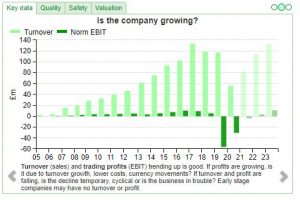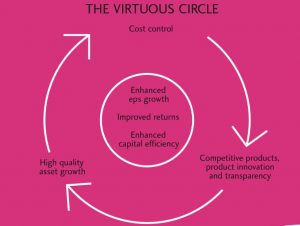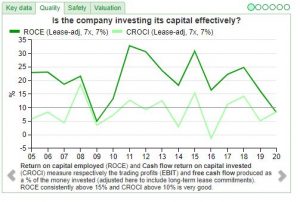
Weekly Commentary 29/03/21: 12-month rebound
There have been at least 15 ten baggers since the March low in the UK. Bruce looks at 4 stocks that now have a fair wind behind them, that should be geared into further recovery.

Financial Analyst, former management consultant, equity research analyst Bruce Packard started his career at Credit Suisse followed by various banks and stockbroking firms before quitting The City to work in financial PR, Litigation finance and finally financial education. In 2008 he predicted the nationalisation of the UK banking industry.
I’m a self-invested, low frequency, buy and hold investor focused on quality. As well as writing for ShareScope I like to capture my financial analysis and non-conformist thoughts on my own blog brucepackard.com. I also used to own a craft beer bar in Berlin and for fun play beach volleyball (unlikely to turn professional though).

There have been at least 15 ten baggers since the March low in the UK. Bruce looks at 4 stocks that now have a fair wind behind them, that should be geared into further recovery.

Bruce compares a couple of Direct Carrier Billing (DCB), mobile payment platforms: Boku v Bango. He wonders if platform economics has become too popular, with the benefits well recognised but not downside. Also Ocean Wilsons, the Brazilian (Salvador, Bahia) port business.

Bruce looks at the fungible vs non fungible assets, using examples from recent events in the art markets. Stocks covered this week are Kape, Somero and Tremor.

With Scottish Mortgage Inv Trust down 9% last week, Bruce looks at the debate between Lawrence “usually a mistake to sell” Burns of Baillie Gifford and Andrew “take profits” Dickson of Albert Bridge Capital. Companies covered Renishaw, Solid State, K3 Capital and Franchise Brands.
Nasdaq sold off last week, down 7% since the middle of February, though still up since the start of the year. Tesla fell to $680, versus a peak of $896 earlier in February. US 10y yields hit 1.49% last week up over 50bp in the last month Financial bubbles don’t pop because speculators suddenly start
At midnight, on 1st January this year, the K.L.F. released their back catalogue of music (hits such as 3AM Eternal, Justified and Ancient, Last Train to Trancentral) on Spotify and uploaded their old videos to YouTube. This was their first activity as a band since 1992, when they announced they were leaving the music industry
Last week Bloomberg reported that junk bond yields in the US fell below 4% the lowest level ever recorded and down from 11.5% peak yield in March last year. This is the opposite direction to the yield on the “risk free rate” of US 10y bond (hitting 1.18% last week) which has been steadily rising
Moonpig IPO’ed last week at 350p, valuing the company at £1.2bn, and the shares rose +24% to 430p the following day. Meanwhile the FT reported that Elon Musk is expecting SpaceX to be valued at $60bn in a funding round later this month. Virgin Galactic is up +163% in the last 3 months. Valuations are
Some of the speculative exuberance has spilled over the punch bowl at the cryptocurrency party into a number of glass half empty equities. GameStonk, err I mean GameStop, rose from below $20 a share earlier this month to over $500 per share, as retail traders from the Reddit thread “Wall Street Bets” piled in to
I was initially unimpressed by the UK’s mass vaccination rollout. However it is important to keep updating your beliefs when data is better than you had been expecting and not miss the inflection point. From below 150K per week in December, we now have almost 5m vaccinated. My mistake was to extrapolate in a linear
In the early days of a new Democrat presidency, the President’s campaign manager observed that: “I used to think if there was reincarnation, I wanted to come back as the President or the Pope or a 0.400 baseball hitter. But now I want to come back as the bond market. You can intimidate anybody.” The
The FTSE 100 started the year strongly +6% during the week to 6857. Both the S&P 500 +1.3% to 3804 Nasdaq +1.4% to 13068 were more subdued, though largely unaffected by events in Washington. 10 years ago when I was in Tbilisi, I remember a US dignitary explaining to the Georgians that the point of